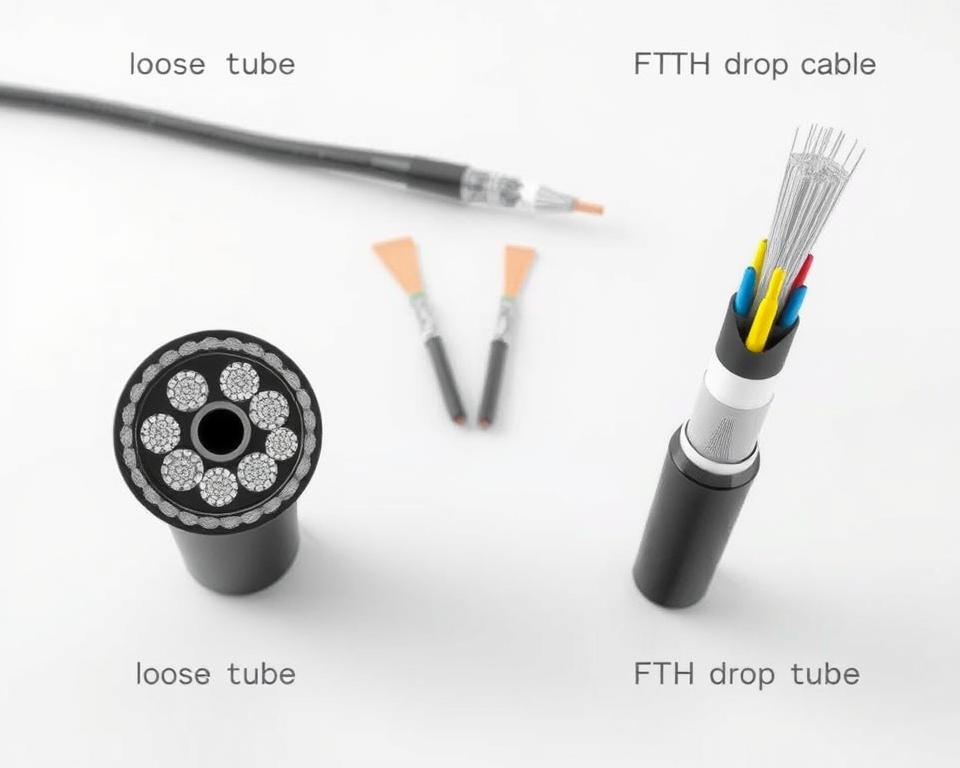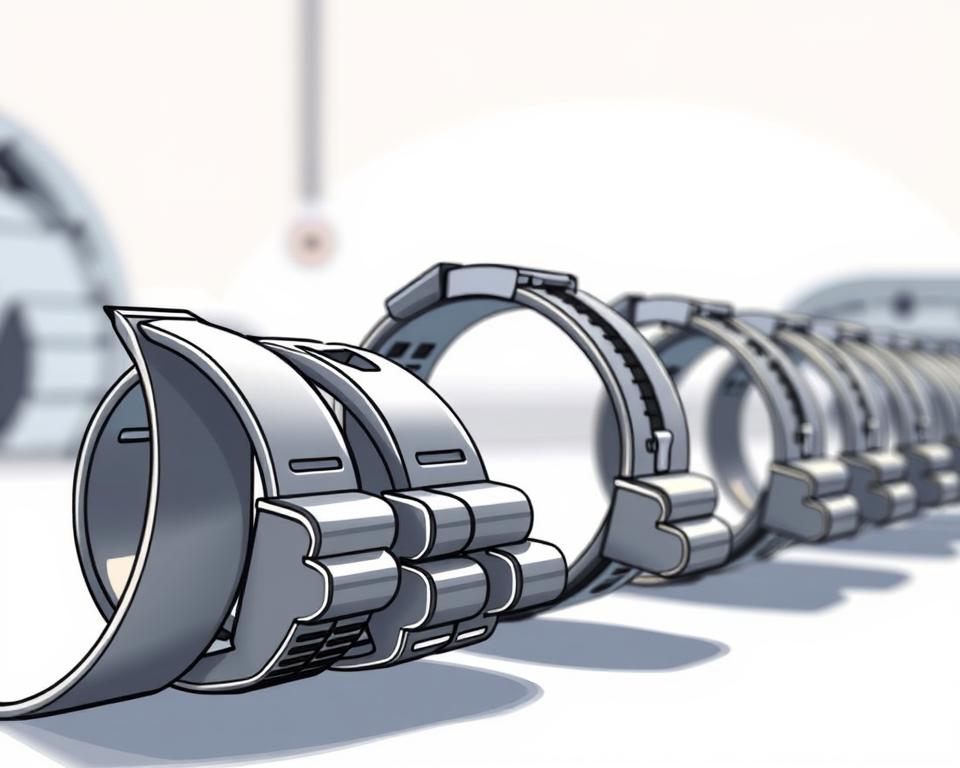The Definitive Guide to FTTH cable Production Line
Allow us to present the essential guide to the FTTH cable production line. Within this comprehensive article, we will examine fiber optic cables and their indispensable role in allowing high-speed data transmission. As the demand for internet connectivity that is both faster and more reliable keeps increasing, understanding the fine points of FTTH cable production becomes essential. From the basics of cable infrastructure to the step-by-step manufacturing process, this guide will provide you with valuable insights into the production of SZ stranding line.
No matter if you’re a newcomer to the industry or aiming to improve your understanding, this guide will help you. You’ll learn about the key components of FTTH cable systems, the part played by optical fibers in FTTH technology, and the process of converting raw materials into high-quality fiber optic cables. We will also cover topics such as design considerations, stranding techniques, buffering and jacketing processes, and the efficient running of the FTTH cable production line.
We will also cover the advanced technologies that are revolutionizing FTTH cable manufacturing, as well as the crucial role of testing and quality assurance in ensuring the reliability and durability of fiber optic cables. We will also cover the final steps of packaging and distribution, ensuring that the FTTH cable production line operates seamlessly from start to finish.
Main Points:
- The FTTH cable production line is essential for delivering high-speed data transmission.
- A basic understanding of FTTH cable infrastructure and its key components is essential.
- From silica to fiber, the step-by-step process of FTTH cable production involves fiber drawing, coating application, and testing.
- Configurations and layouts designed to meet specific network requirements can lead to optimized performance.
- The fiber gains support and protection from stranding techniques and central strength members.
Fundamentals of FTTH cable Production
In order to understand the process of FTTH cable production, it is essential to have a clear understanding of the cable infrastructure, key components, and the role of optical fibers in FTTH technology.
Essential Aspects of FTTH cable Infrastructure
In fiber-to-the-home (FTTH) systems, the FTTH cable infrastructure is the network of cables, connectors, and distribution points that allows data to be transmitted. It forms the backbone of high-speed internet connectivity, allowing for seamless data transfer between the provider’s network and the end user’s premises.

Essential Elements of FTTH cable Systems
FTTH cable systems consist of several key components that work together to ensure the smooth and efficient transmission of data. These components include:
- In the form of light, data signals are carried by these fiber optic cables. Designed to offer high bandwidth and minimize signal loss, they ensure data transmission is fast and reliable.
- Playing a crucial role, connectors join fiber optic cables to other cables or devices, making it easy to connect and disconnect them when necessary. A secure and reliable connection is provided by them, which helps minimize signal loss.
- Multiple end users receive divided and distributed fiber optic signals through the use of distribution points. Their purpose is to help each user receive the correct amount of bandwidth while maintaining the overall network performance.
Significance of Optical Fibers in FTTH Technology
Without optical fibers, FTTH technology wouldn’t be possible. Their design allows these thin strands of glass or plastic to efficiently transmit data signals using light pulses. Optical fibers are known for their high bandwidth capacity, low signal loss, and immunity to electromagnetic interference, making them ideal for high-speed data transmission.
The light signals are carried by the core of these fibers, which is surrounded by a cladding layer that reflects the light back into the core, thereby preventing signal loss. This design enables optical fibers to carry data over long distances without the signal quality or speed getting worse.
Step-by-Step Process: From Silica to Fiber
The Art of Fiber Drawing: Creating the Cable’s Core
To start the FTTH cable production process, fiber drawing is performed to craft the core of the cable. This involves taking a glass preform made of silica and pulling and stretching it until it becomes a long, thin fiber. The diameter of the fiber is precisely controlled during fiber drawing to guarantee optimal performance. The core’s quality and composition play a crucial role in determining the cable’s ability to transmit data efficiently and accurately.
Applying a Protective Layer: Coating Application for Durability
After the fiber drawing process, the next step is coating application. The fiber receives a protective layer, known as a coating, at this stage. The coating has several roles, including acting as a buffer against external factors like moisture, which enhances the fiber’s long-term durability and reliability. Furthermore, the coating material is carefully chosen for its appropriate mechanical properties, ensuring the fiber stays intact and protected throughout its life.
Quality Assurance: Fiber Testing at All Stages
Throughout the FTTH cable production process, fiber testing is conducted at various stages to verify the quality and performance of the fiber. These tests involve measuring the fiber’s physical characteristics like diameter, attenuation, and tensile strength, and also checking the coating for uniformity and how well it sticks. The overall quality and performance of the final FTTH cables are guaranteed by these crucial tests, which ensure the fiber meets the necessary standards and specifications.
| Production Stage | Parameters Tested |
|---|---|
| Fiber Drawing | Diameter, Attenuation, Tensile Strength |
| Coating Application | Coating Thickness, Uniformity, Adhesion |
Testing Parameters at Various Stages of FTTH cable Production: Table
This table provides a summary of the testing parameters that are measured at various stages of the FTTH cable production process. To ensure the high-performance and reliability of FTTH cable systems, manufacturers conduct rigorous testing to verify that every fiber used in the cables meets the required quality standards.
Creating FTTH cable Configurations
The design of cable configurations is a vital aspect of fiber-to-the-home (FTTH) cable production, as it helps meet network requirements and optimize performance. cable design involves considering factors such as network capacity, scalability, and the desired speed of data transmission. Efficient deployment and maximized capabilities of their network infrastructure are achieved by companies that tailor cable configurations to their specific needs.
There are various FTTH cable configurations and layouts to choose from, each with its own set of advantages and considerations:
- In a Daisy Chain Configuration, subscribers are connected in a line to the main distribution point. This is a budget-friendly option that works well in areas where not many people are subscribing.
- In the star configuration, the central office or hub is directly connected to each subscriber. It’s a flexible design that’s easy to maintain, making it ideal for areas with a high population density.
- Subscribers are connected in a circle in the ring configuration. This configuration offers backup and can handle failures, so service isn’t interrupted if the network goes down.
- In a tree configuration, individual subscribers are connected to secondary distribution points, which are connected to the main distribution point. This configuration allows the network to grow easily and is often used in areas where there are a lot of subscribers.
- High reliability and redundancy are features of the mesh configuration, which provides multiple connections between distribution points. This configuration is often used in very important applications where it’s crucial that the service never stops.
When you’re designing FTTH cable configurations, you need to take into account what the network needs and how much it’s likely to grow. Depending on factors like how many subscribers there are, where they are geographically located, and what services are needed, the right configuration should be selected, as each has its own benefits and drawbacks.
Companies can create FTTH cable configurations that are tailored to their specific network needs and provide the best performance by carefully considering these factors and working with experts in the field.
Equipment and Techniques Used in Stranding
The production of strong and durable FTTH cables relies heavily on the stranding techniques and equipment employed. Different stranding patterns are employed, each with its own advantages and applications. Efficient and high-quality cable production requires the selection of the right stranding machinery. Central strength members also play a role in providing extra support and protection to the fiber, which contributes to the overall reliability of the FTTH cables.
Exploring Different Stranding Patterns
When producing FTTH cables, one of the main things to consider is which stranding pattern to use. The characteristics that are wanted in the cable will determine which stranding pattern is used, and examples include reverse concentric, SZ stranding, and helical stranding. The unique features of each pattern can enhance the cable’s performance in areas like flexibility, strength, and how well it holds up against external factors. To make sure the FTTH cables perform as well as possible and last a long time, stranding patterns are carefully chosen to meet the specific needs of the application.
How to Choose Stranding Machinery
Without stranding machinery, the FTTH cable production line wouldn’t function. While keeping the fibers at the right tension and in the correct alignment, it allows for the precise creation of the stranding pattern. Choosing the right Fibers in metal tube machinery depends on factors such as cable diameter, production speed, and desired level of automation. Because advanced stranding machines are more efficient and flexible, manufacturers can produce a large number of cables and also offer customization.
Understanding Central Strength Members
Using central strength members in FTTH cables helps to improve their mechanical properties. The delicate fiber inside the cable is protected, and the cable gains stability and enhanced tensile strength from them. Acting as a backbone and made from materials like aramid or fiberglass, the central strength members reinforce the cable structure and help it withstand external forces. The presence of central strength members ensures that FTTH cables can handle the stresses of installation and maintain the integrity of signal transmission, making them suitable for a variety of deployment scenarios.
Fiber Protection: Buffering and Jacketing
The delicate fiber inside FTTH cables is protected by the crucial buffering and jacketing processes used in their production. The fiber is shielded from a variety of potential threats, including moisture, abrasion, and other external factors that could negatively impact its performance and lifespan, thanks to these processes.
The Significance of Buffering in Fiber Protection
The process of buffering includes applying a protective layer around the fiber, and this layer acts as a barrier against environmental elements. By preventing water from penetrating, this layer can stop signal loss or even the fiber from breaking. Buffering also makes the cable more resistant to rubbing, which lowers the chance of damage when it’s being installed or maintained.
For the fiber to experience minimal stress, the buffering materials used need to stick to the fiber very well and have a low coefficient of friction. The appropriate buffering material to select will depend on factors like the environmental conditions the cable will be in and the level of protection that is needed.
How to Select Jacketing Materials
Jacketing is the process of applying an outer layer to further protect the fiber and the buffering materials. Specific selection of the jacketing material is made to offer strong protection against mechanical stress, impact, UV radiation, and other potential hazards.
When choosing jacketing materials, things like how flexible they are, how well they resist fire, and whether they can handle the environment they’ll be in are all taken into account. Materials such as polyethylene (PE), polyvinyl chloride (PVC), and low-smoke zero-halogen (LSZH) compounds are commonly used for jacketing. Depending on the specific application and what the industry standards require, a material will be chosen, as each has its own advantages and disadvantages.
Applying the Latest Jacketing Technologies
The way FTTH cables are protected has been revolutionized by the progress in jacketing technologies. These latest technologies provide better strength, more flexibility, and improved resistance to environmental factors, leading to greater durability and reliability.
One of the innovative jacketing technologies includes tight-buffered cables, where each fiber is individually buffered with a thin layer of plastic, providing excellent protection and flexibility. Micro-ducts, another technology, use strong tubing to contain multiple fibers, offering high density and making cable installation versatile.
Specialized jacketing technologies have also been developed to meet the unique requirements of various industries. Armored jackets might be used on cables that are in harsh outdoor environments, for example, to give them better protection against rodents, moisture, and extreme temperatures.
By leveraging the latest jacketing technologies, FTTH cables can be customized to meet the demands of various applications, ensuring optimal performance, longevity, and reliability.
The Workings of the FTTH cable Production Line
For a smooth and streamlined manufacturing process in the FTTH cable production line, efficient operations are essential. The production of high-quality fiber optic cables for high-speed internet connectivity relies on each step in the production line being vital. To achieve optimal efficiency, various machinery and equipment are utilized.
Preparation of raw materials, including the silica for fiber drawing, is the initial stage of the manufacturing process. The process then moves on to fiber drawing, where the cable’s core is carefully made to achieve the desired specifications. Coating application follows, ensuring durability and protection for the fiber.
To make sure the cables meet the highest standards, quality is the most important thing, and thorough fiber testing is done at every step of the production line. This includes checking for things like how much the signal weakens, the bandwidth, and the amount of signal loss.
Efficiency is critical in FTTH cable production line operations. Using machinery and equipment in the most efficient way allows manufacturers to reduce production time and costs and also produce the maximum amount. Additionally, efficient processes contribute to the overall quality of the cables.
The manufacturing process can be complicated, with various stages and components involved. Manufacturers can make their FTTH cable production line work better and more efficiently by using efficient operations and always looking for ways to improve things.
The following table summarizes the key machinery used in the FTTH cable production line and what each machine does in the manufacturing process, to give you a complete understanding of how it all works:
| Machine | Role |
|---|---|
| Fiber Drawing Machine | Produces the fiber optic cable core by pulling and stretching the silica material. |
| Coating Machine | Applies a protective coating to the fiber optic cable, ensuring durability and resistance to external factors. |
| Fiber Testing Equipment | Conducts various tests on the fiber optic cable to ensure quality and performance. |
| Spooling Machine | Winds the finished fiber optic cable onto spools for packaging and distribution. |
| Jacketing Machine | Applies an outer jacket to the fiber optic cable, providing additional protection and improving its handling. |
By using advanced machinery and technologies, manufacturers can make their production line operations more efficient, improve their effectiveness, and deliver high-quality FTTH cables that satisfy the growing need for high-speed internet connectivity.
Latest Technologies Used in FTTH cable Manufacturing
Advanced technologies are essential for improving efficiency and quality in the ever-changing field of FTTH (Fiber to the Home) cable manufacturing. Automation, AI integration, and fiber coloring machines have completely changed the production process due to the increasing demand for high-speed data transmission, which has driven innovation and led to the creation of superior products.
Using Automation to Produce Fiber Optic cables
The automation of fiber optic cable production has significantly transformed the manufacturing landscape. Precise control over the manufacturing process is possible with advanced machinery and robotics, which guarantees consistent quality and reduces the likelihood of errors. This automation allows for higher productivity rates, faster production times, and improved accuracy, ultimately leading to cost savings and enhanced customer satisfaction.
Using AI to Control Quality
By integrating artificial intelligence (AI) into the quality control process, FTTH cable manufacturers can achieve unprecedented levels of accuracy and reliability. In real-time, AI algorithms can look at the data from production and find any differences or problems that might affect how good the cables are. By being proactive about quality control, manufacturers can reduce errors, make production more efficient, and ensure that only the highest quality FTTH cables are available for purchase.
The Benefits of Fiber Coloring Machines
The way FTTH cables are manufactured has been revolutionized by the introduction of fiber coloring machines, which provide improved customization options. Optical fiber strands can be color-coded by fiber coloring machines, which makes it easy to identify them and manage the cables efficiently when installing or maintaining them. By using this technology, manual color coding is no longer needed, which reduces the chance of errors and makes the entire process of deploying cables more efficient.
The Role of Testing and Quality Assurance in Fiber Optics
For fiber optics, it’s extremely important to make sure the quality is as high as possible. Throughout the whole production process, strict testing and quality assurance steps are taken to make this happen. Playing a crucial role, standardized testing protocols guarantee the reliability and consistency of fiber optic cables.
The Importance of Standardized Testing Protocols
The purpose of establishing standardized testing protocols is to ensure that every fiber optic cable meets the required quality standards. During every step of the production process, specific testing procedures and criteria that must be followed are outlined in these protocols. Following these protocols allows manufacturers to find and fix any potential problems, making sure that only the highest quality cables are given to customers.
Role of OTDR in Quality Checks
Quality checks on fiber optic cables are incomplete without the use of Optical Time-Domain Reflectometer (OTDR). Using light pulses, OTDR is a testing tool that measures how much signal is lost and reflected along an optical fiber. By analyzing the OTDR traces, technicians can detect issues such as fiber bending, signal loss, or connector damage. Finding the exact location of any problems and taking steps to fix them is made possible, which ensures the cable’s overall quality and performance.
Ensuring Strict Quality Assurance Standards
The consistent and reliable performance of fiber optic cables is ensured by maintaining quality assurance standards throughout the entire production process. The selection of materials, the processes used to manufacture the cables, and the testing of the final product are all aspects covered by these standards. By adhering to these rigorous standards, manufacturers can ensure that their products meet the highest levels of quality and performance required by the industry.
The Last Steps: Packaging and Distribution of FTTH cables
The last steps in the production of compact fiber unit, which are packaging and distribution, are the focus of this section. It’s crucial to ensure that the cables are packaged correctly and efficiently after they have been through all the different manufacturing processes, as this helps with their deployment and installation in the field. Protective packaging solutions are also key to making sure the delicate fiber optic cables are safe during transportation and storage. It’s essential to have efficient logistics and supply chain management to ensure that FTTH products are delivered to customers in a timely way and effectively meet their connectivity needs.
Best Practices for cable Spooling
For FTTH cables to be installed smoothly and easily, efficient techniques for spooling them are vital. Storing and transporting cables in a practical and organized manner is done using cable spools, which also helps prevent tangling or damage. Using optimized cable spooling techniques allows cable installers to save both time and effort during the deployment process. Cables that are spooled correctly make the installation look better overall, ensuring it’s neat and professional.
The Importance of Protective Packaging for Fiber Optic cables
It’s very important to use effective protective packaging solutions to safeguard the delicate fiber optic cables during transportation and storage. The packaging should provide cushioning, absorb shocks, and resist external factors such as moisture, dust, and physical impact. By utilizing high-quality packaging materials and techniques, manufacturers can ensure that the fiber optic cables arrive at their destination in optimal condition, ready for installation. This not only safeguards the integrity of the cables but also improves customer satisfaction by minimizing the risk of damage or performance degradation.
How Logistics and Supply Chain Management Affect FTTH Products
Efficient logistics and supply chain management are crucial for the successful delivery of FTTH products to customers. This involves carefully planning the transportation, storage, and distribution of the cables to ensure timely and reliable delivery. Managing the supply chain effectively helps minimize delays and optimize the flow of products, reducing costs and enhancing customer service..
Summary
This ultimate guide to the FTTH cable production line has provided a detailed look at the process of manufacturing fiber optic cables for high-speed internet connectivity, in conclusion. The significance of the FTTH cable production line in enabling data transmission that is both fast and reliable has been highlighted throughout this article.
Seamless communication, streaming, and online activities are facilitated by fiber optic cables, which play a critical role in high-speed internet connectivity. The step-by-step process of FTTH cable production, from fiber drawing to buffering and jacketing, ensures the durability and quality of these cables.
The manufacturing process has been completely changed by advanced technologies like automation and AI integration, which have made it more efficient and accurate. In addition, standardized testing protocols and rigorous quality assurance standards guarantee the reliability and performance of fiber optics.
Packaging and distribution are the final steps in FTTH cable production, ensuring that these essential cables are efficiently deployed and protected during transportation. Overall, the expertise and precision involved in the FTTH cable production line are essential in meeting the increasing demand for high-speed internet connectivity around the world.


